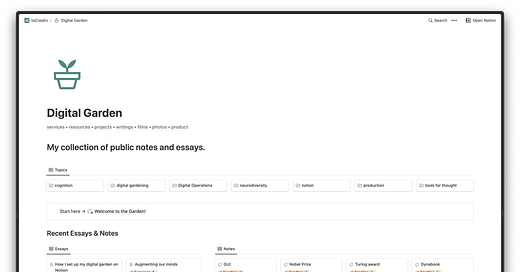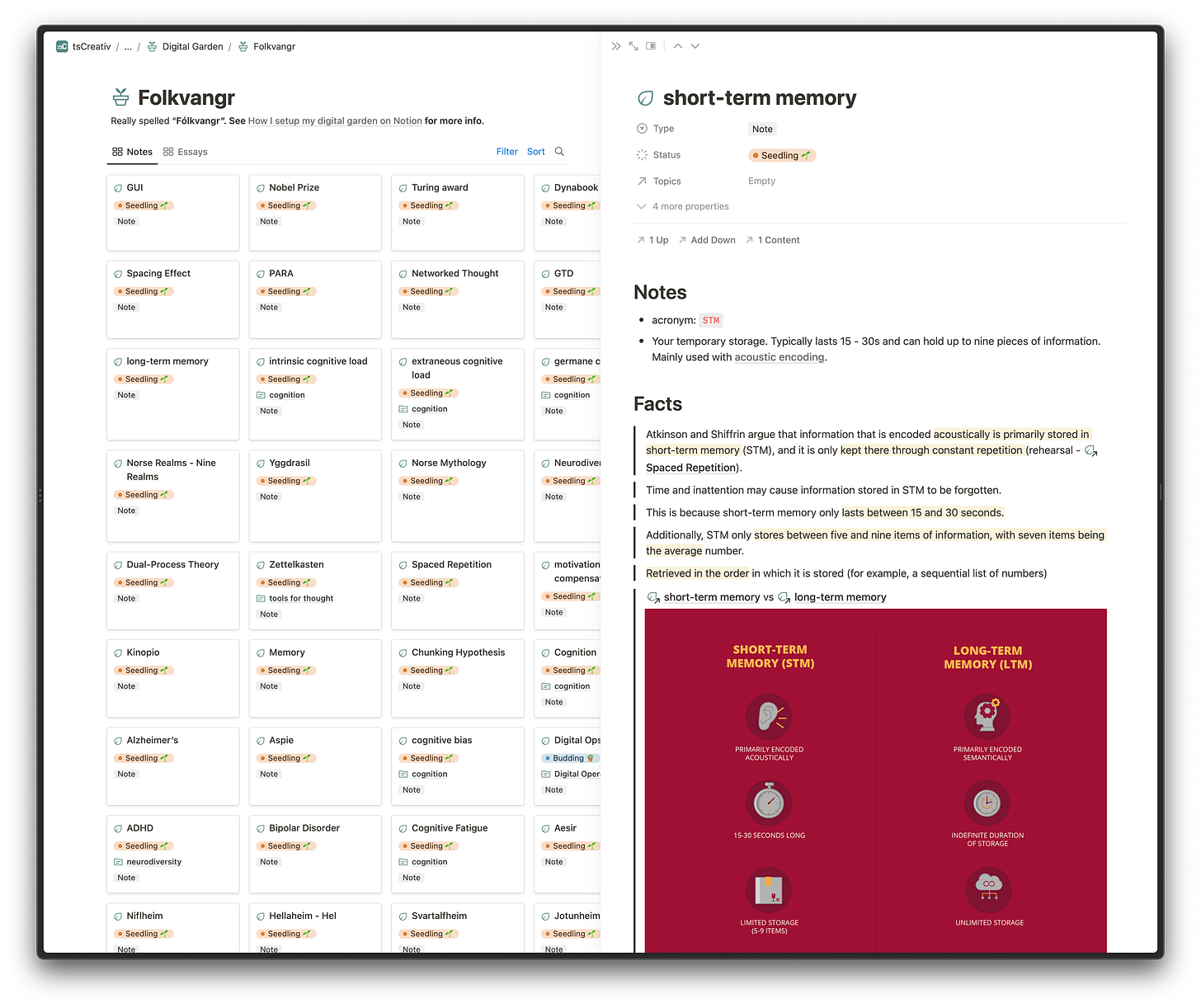There is a term thrown around a lot on the interwebs these days – building in public. The idea is that you build a product or system in the eyes of many. You hide less of the specifics and include your community in the process. While this concept is great and I appreciate it, I’ve been more fascinated by the idea of thinking in public.
What is thinking in public? I see it as leveraging your notes or other PKM (personal knowledge management) mediums as artifacts on the internet. Having them live on the web for all to see and peruse.
Some might think this is a blog. While it can seem that way, there are a few key differences. In this public knowledge base, there is no linear path, you can enter anywhere and follow the bi-directional links as you see fit. Secondly, your thoughts can evolve from small to bigger ideas or reshape to new concepts entirely. This medium is called Digital Gardening.
The concept of digital gardening is not new. It has been around for a while, but until recently it was hard to achieve without being fairly technical. Previously you had to build something custom or at least deploy some pre-packaged code. Now there are tools that make this simpler, an out-of-the-box experience. Using tools like Notion or Obsidian Publish offer publishing your PKM in a few clicks. While the tool lessens the barrier, how do you actually garden digitally?
So before I get into the how, let me clarify that while there are similarities to Zettelkasten, there are some key differences. First, Zettelkasten tends to be for 100% "personal" knowledge management, while digital gardening is mainly "public". Second, there is no recommended structure to digital gardening other than the status of a note. Zettelkasten relies on the concept of a daily note, while digital gardening does not, traditionally.
Like tending a physical garden, digital gardening is tending your thoughts
The structure
Digital gardening focuses on and plays with the term “tending”. Like tending a physical garden, digital gardening is tending your thoughts. You do this by using a simple set of statuses - seeding, budding, and evergreen.
Seeding
This is where the thought starts. It can be a loose idea or information. There doesn’t need to be much structure or personal opinion. This stage is for collecting and rough drafting.
Budding
When your thought starts to evolve, it is in the budding phase. Your thoughts have gotten their footing. You have formed a stronger opinion on the subject and your understanding of it is deeper. You might even be connecting other notes to this one, using bi-directional links.
Evergreen
Your note is evergreen when you have a deep understanding and strong foundation of knowledge. You are linking it with smaller – budding and seeding notes. You might even turn it into a more structured piece of content; an essay.
Types of writings
Going beyond the statuses, there are two types of notes that live in a digital garden: the note, and the essay. Having these two formats and pairing them with statuses allows for many permutations of thoughts. You can connect multiple notes into a more narrative-driven essay, which allows for a better understanding of the topic for a visitor and better retention for you.
There are tons of amazing digital gardeners out there, here are some of my favorites:
I have also dabbled a bit in gardening.
I really love the idea of a digital garden. It is a more personal, raw, non-linear place on the internet. There isn't much of this anymore. There are so many feed-based tools and networks, that choosing your own adventure doesn't really exist. During a conversation, you don't follow a prescribed path to finding out information about someone, you ask questions and deviate in subjects you didn't think would come up. This is the beauty of a garden, it emulates just that.
If you think that you'd like to start your own, but don't know where to begin, I do have a Notion template to get you started. If you'd rather try something else or just want to pick my brain, feel free to reply to this letter and I will help in any way I can.
Subscribe to Async Chats! | Follow on Twitter | Newsletter Feedback Form







